© Steve Cary, July 2, 2024
Below are some recent fun stories and a couple of interesting tidbits from the butterfly world of New Mexico and elsewhere.
Notes from the Field, Bob Friedrichs. Sent: Monday, June 17, 2024, 4:52 PM, To: Steve Cary sjcary1@outlook.com, Subject: Butterflies along FR 134 near Questa. Steve, I trust you had a good weekend. Mine was quiet. I did a Breeding Bird Survey on Saturday near San Luis that produced most of the usual suspects. A skylarking Cassin’s Sparrow was the biggest surprise. This morning my plan was to drive to Midnight Meadow and check out the birds and butterflies. Best laid plans…. I got a late start and then discovered I had a slow leak in my left rear tire on the Jeep. After getting that repaired, it was getting a bit late and windy for birds, so I focused my efforts on butterflies. FR134 is already getting quite busy and therefore dusty with early summer visitors from OK and TX in UTVs, in SUVs and any form of RV you can imagine. Still, there were lots of butterflies to keep me distracted and engaged.
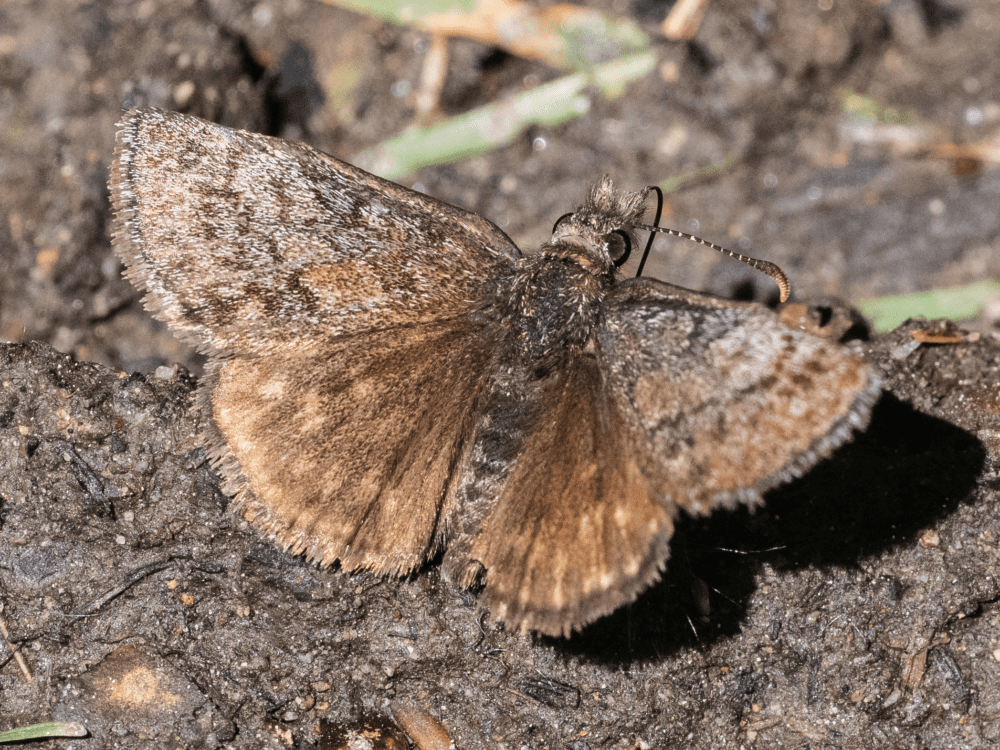
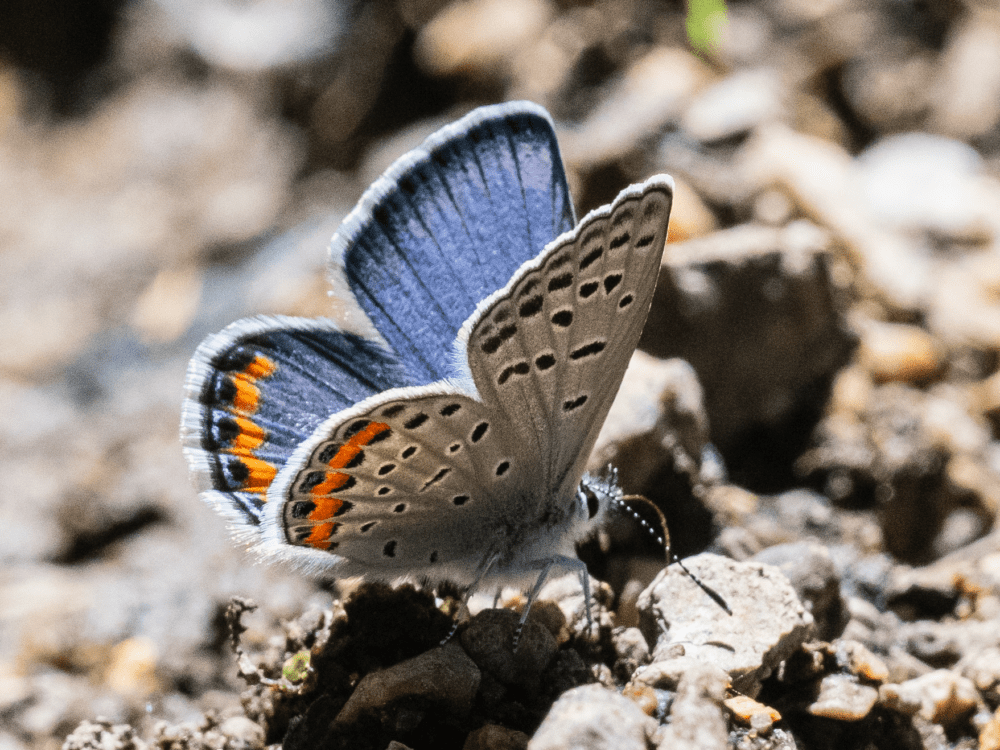
In fact, I never made it to Midnight Meadow there was so much action down lower. There must have been hundreds of Western Tiger Swallowtails flying, and at least a half dozen Pale Swallowtails that didn’t want to ‘sit’ so I had to resort to flight shots of one slow-flying individual, and those turned out surprisingly well.
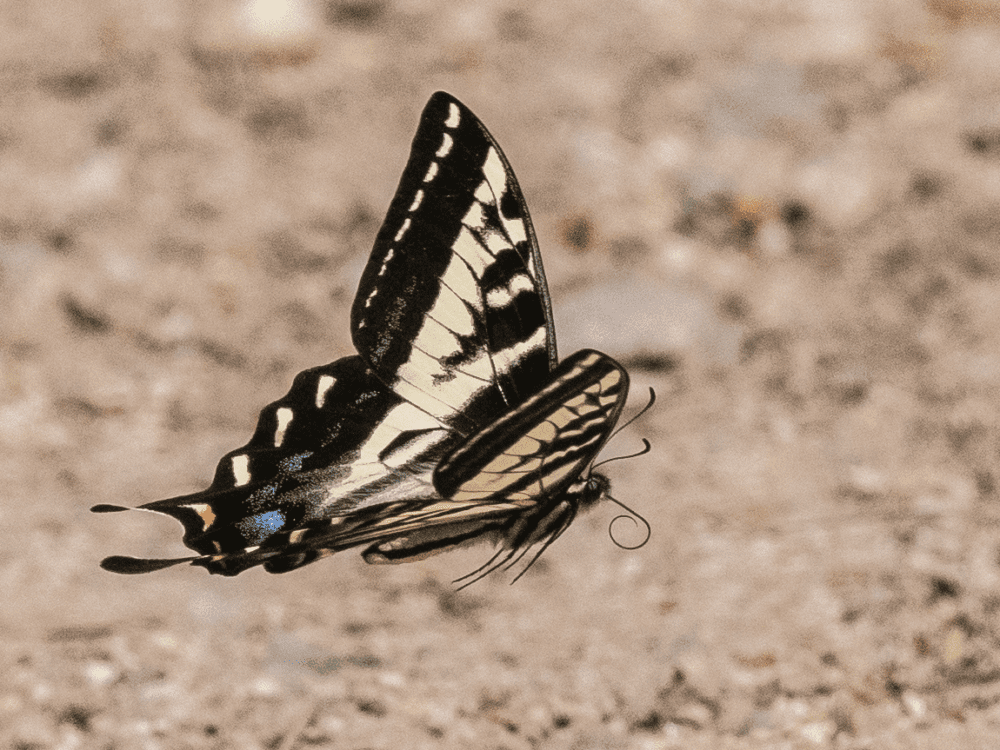
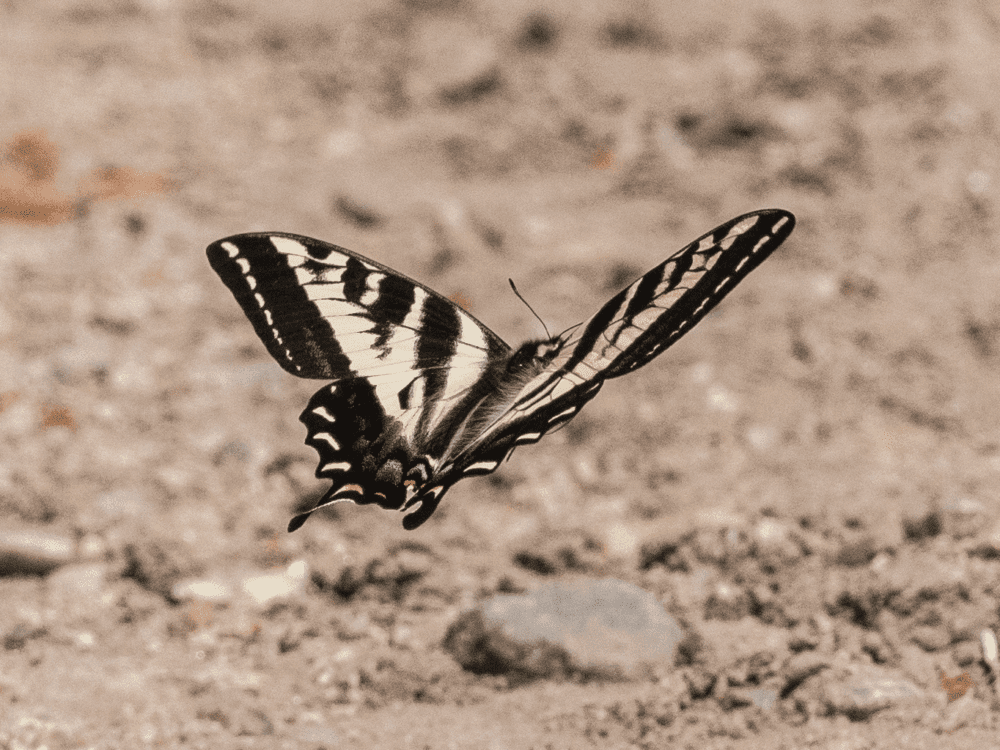
Other species observed included: Checkered White, Orange Sulfur, Gray Hairstreak, Western Pine Elfin, (Northern) Azure, Lupine Blue, Reakirt’s Blue, Melissa Blue, Russet Skipperling, Dreamy Duskywing, Common/White Checkered Skipper, Nevada Skipper for which I only got a dorsal pic – attached, Variegated Fritillary, Painted Lady, Weidemeyer’s Admiral, Field Crescent, Hoary Comma, and Common Ringlet. Tire repair notwithstanding, it was a good morning all in all.
What’s For Dinner? On June 25, friend Tom texted this photo to me, commenting that “My dreams of the benevolent butterfly are shattered! Explain this!” “Paula [his wife] says it reminds her of the famous Hitchcock thriller, The Butterflies!”
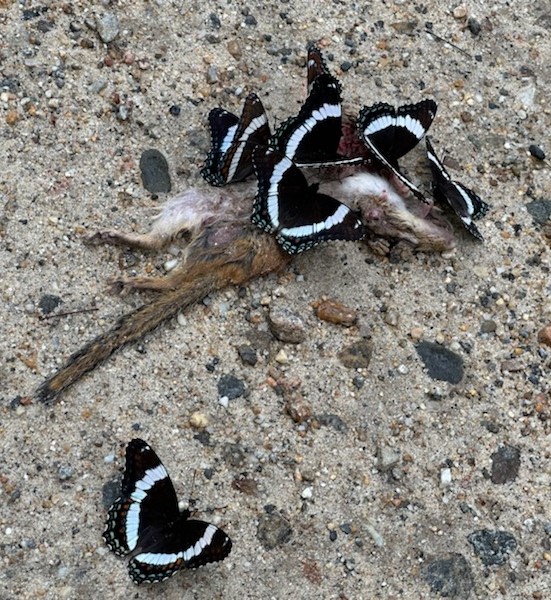
I went along with this crazy notion from our New Hampshire friends, replying: “The truth is out. They are vicious carnivores – the real reason dinosaurs went extinct! Actually, they’re just tamely harvesting electrolytes, but your story will sell more papers. May I please borrow for a future blog post?” Tom replied: “Absolutely. It will stun many of your followers. The savages! Interesting about your minerals and electrolytes. Is it a Blue Admiral? They are everywhere right now, particularly in the middle of our dirt road. I can only imagine hunting minerals.”
I replied: “White Admiral is their name. We don’t have those here in New Mexico, but we do have the very similar Weidemeyer’s Admiral, which does very similar things [see photo below]. Electrolytes are a big thing for butterflies, especially on hot summer afternoons. Scat is a more frequent target, as on this giant cow flop in the Gila. Electrolytes come in only so many forms, so a ripening corpse is also a delicacy. You got to take ’em where you can get ’em.

Tom: “I took the photo while riding my bike. Similar butterfly clusters were found on a squashed frog and a similarly disposed chipmunk. A macabre ride for sure. Hopefully we don’t drop dead in the yard, although being devoured by butterflies seems to be a glorious way to go. Do all butterflies feed on carrion?”
Steve: “Well, perhaps not all butterflies, as some do not like to be on the ground. Overall, butterfly diets are limited to liquids (due to the limitations of their proboscis) and most species rely heavily on flower nectar, but they also can slurp up electrolytes and nutrients from tree sap and rotting fruit, not to mention scat and carrion. Indeed, some species eschew nectar entirely and prefer sap from tree wounds.”
Tom, thanks for bringing this curious situation to my attention!
Dear readers, here is a link you may be curious about: From Africa to South America – – More Documentation of Painted Lady Migration: New York Times article: Scientists Find First Evidence That Butterflies Crossed an Ocean
Metamorphosis. Being at my brother’s place in Milwaukee at this very moment, I cannot close without sharing a little of what he is up to. Best wishes to you all for a butterfly-filled July!


To make matters “worse”, there is a group of moths in SE Asia which feed on blood (https://entomologytoday.org/2015/10/30/vampire-moths-suck-the-blood-of-vertebrates-including-humans/, https://en.wikipedia.org/wiki/Calyptra_(moth)). Other moths and butterflies drink tears from various animals, including birds: https://en.wikipedia.org/wiki/Hemiceratoides_hieroglyphica, https://www.australiangeographic.com.au/topics/wildlife/2023/08/blood-suckers-and-tear-drinkers-the-secretion-lives-of-butterflies-and-moths/
thanks, Mike. You’re giving me more ideas!
Fascinating post, thanks Steve! Are photos/observations from Bob Friedrichs posted to iNaturalist?
Thanks, Christina. Bob posts his images to BAMONA.
Fascinating! Butterflies besides nectar get nutrients from other sources. The picture shows the Weidemeyer’s Admiral is very good example..
Thank you
Wonderful articles. And so interesting about the Painted Lady! Thanks in particular for sharing that.